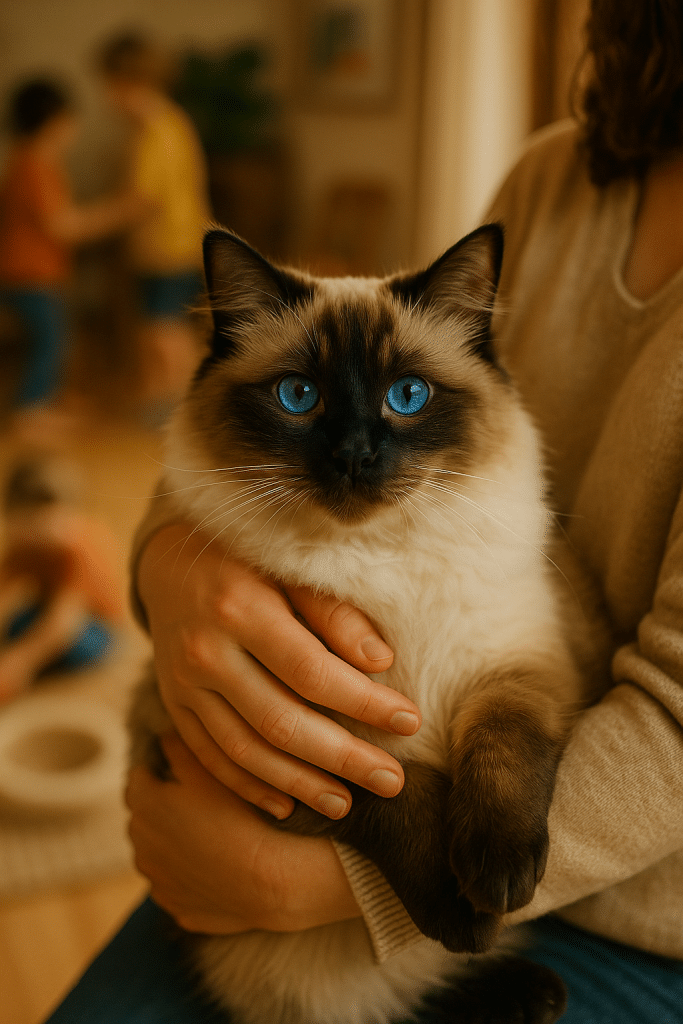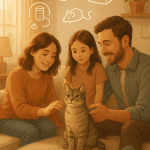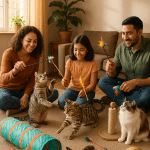When considering a furry family addition, many pet owners yearn for a cat that thrives on love, companionship, and gentle interaction. As someone who’s spent years immersed in feline behavior, I understand how crucial it is to find breeds known not just for their beauty but for their affectionate nature. Affectionate cat breeds truly enrich family life with their loving temperament, making every cuddle, purr, and playful moment a joy to experience.
In this detailed guide, I’ll walk you through the intricacies of affectionate cat breeds, exploring their temperaments, how they express love, and which breeds top the charts for families seeking a deeply devoted companion. We’ll break down the traits that make a cat affectionate, outline the five most loving breeds suited to various lifestyles, and provide practical advice on training and bonding with these special pets. Whether you have young children or prefer a calm lap cat, you’ll find actionable insights to help you make an informed, heartwarming choice.
Let’s dive into the world of affectionate cat breeds, uncovering those most well-suited to become your family’s next heart-stealer!
Understanding Affectionate Cat Breeds: Traits and Temperaments
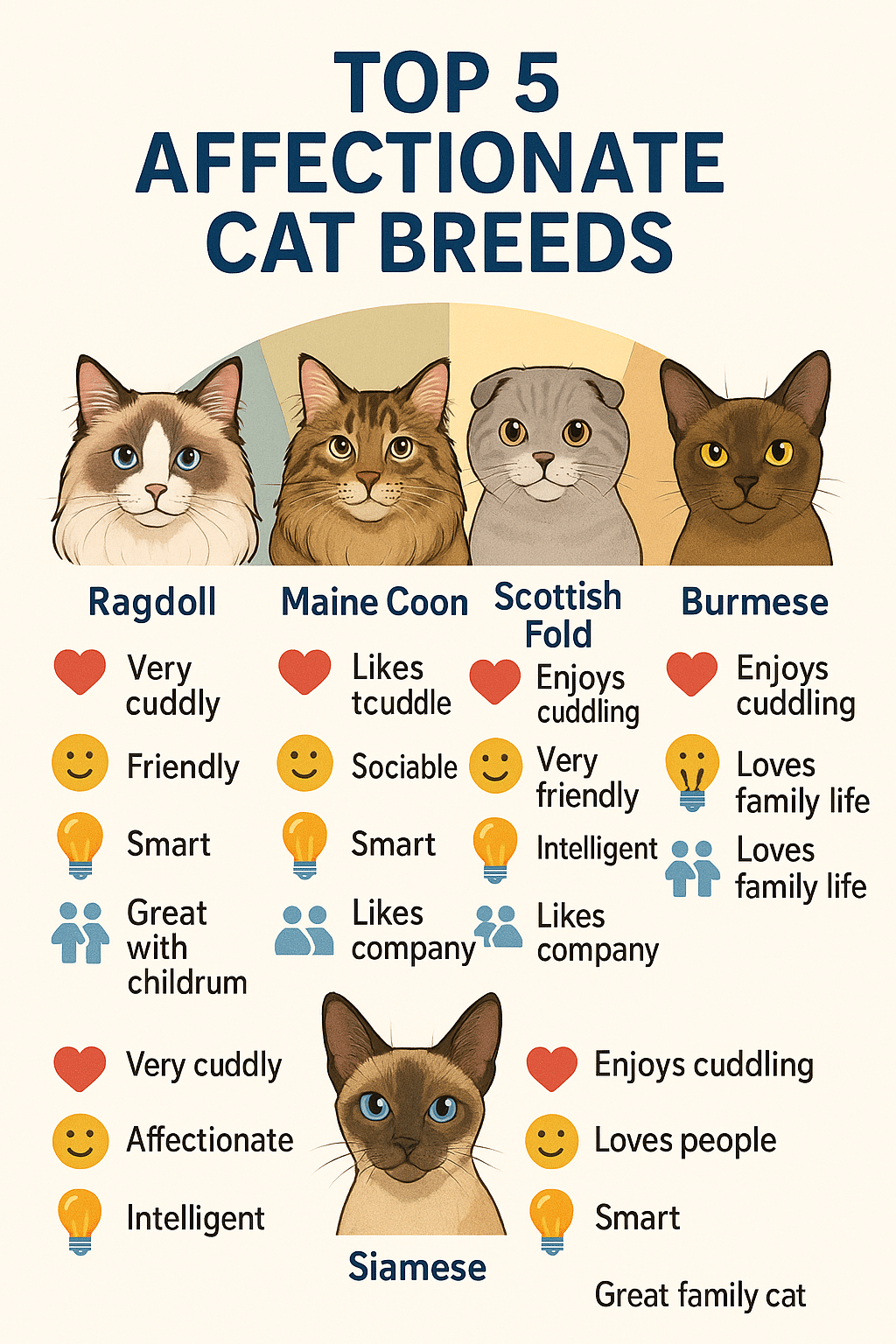
Choosing the perfect affectionate cat breed starts with understanding what “affection” truly looks like in feline terms. Cats express love differently than dogs, so deciphering their behavioral and emotional cues is key to nurturing a bond that lasts.
Defining Affection in Cats: Behavioral and Emotional Cues
Affection in cats may manifest as physical closeness—think curling up on your lap or following you from room to room—but it can also be more subtle. Cats show their trust and fondness through behaviors such as:
- Purring: Often a sign of contentment and comfort, though it can also mean seeking reassurance.
- Slow blinking: This “cat kiss” communicates relaxation and affection.
- Head bunting: Pressing their head against you signals marking you as a trusted friend.
- Kneading: Using their paws rhythmically on your lap or body is a sign of deep contentment dating back to kittenhood.
- Following and shadowing: Cats that stay close exhibit a desire to be near their humans.
- Vocalizations: Some affectionate breeds use meows or chirps to engage and interact.
Conversely, an affectionate cat is less likely to display aggression or avoidance behaviors around familiar people. Recognizing these signs helps pet owners nurture a positive, reciprocal relationship.
The Role of Cat Temperament in Choosing a Family Pet
Temperament forms the foundation of a cat’s personality and directly influences their affectionate behavior. While every cat is an individual, breed tendencies guide expectations. Temperaments range from highly social and playful to independent and reserved.
Affectionate cat breeds generally share these traits:
- Sociability: They enjoy interaction, even with strangers and children.
- Gentleness: They handle handling and human contact calmly.
- Loyalty: They bond closely with family members.
- Playfulness: They engage actively, facilitating fun and mental stimulation.
- Adaptability: They adjust smoothly to new environments and routines.
For families, these temperament traits ensure the cat integrates well into diverse household dynamics, especially those with kids or other pets.
How Breed Characteristics Influence Affectionate Behavior
Genetics and selective breeding contribute heavily to affectionate tendencies. Some breeds have been developed specifically for their devotion to humans, including traits like:
- Velveteen fur combined with a calm demeanor (e.g., Ragdoll)
- Large size matched with sweet, gentle nature (e.g., Maine Coon)
- Highly vocal and social communication styles (e.g., Siamese)
- Endearing dependency and attentiveness (e.g., Burmese)
- Playful, energetic, and tactile-oriented (e.g., Sphynx)
These breed characteristics shape how cats show love, meaning that certain breeds naturally gravitate toward lap-warming and close companionship, making them ideal for affectionate homes.
Top 5 Affectionate Cat Breeds for Families
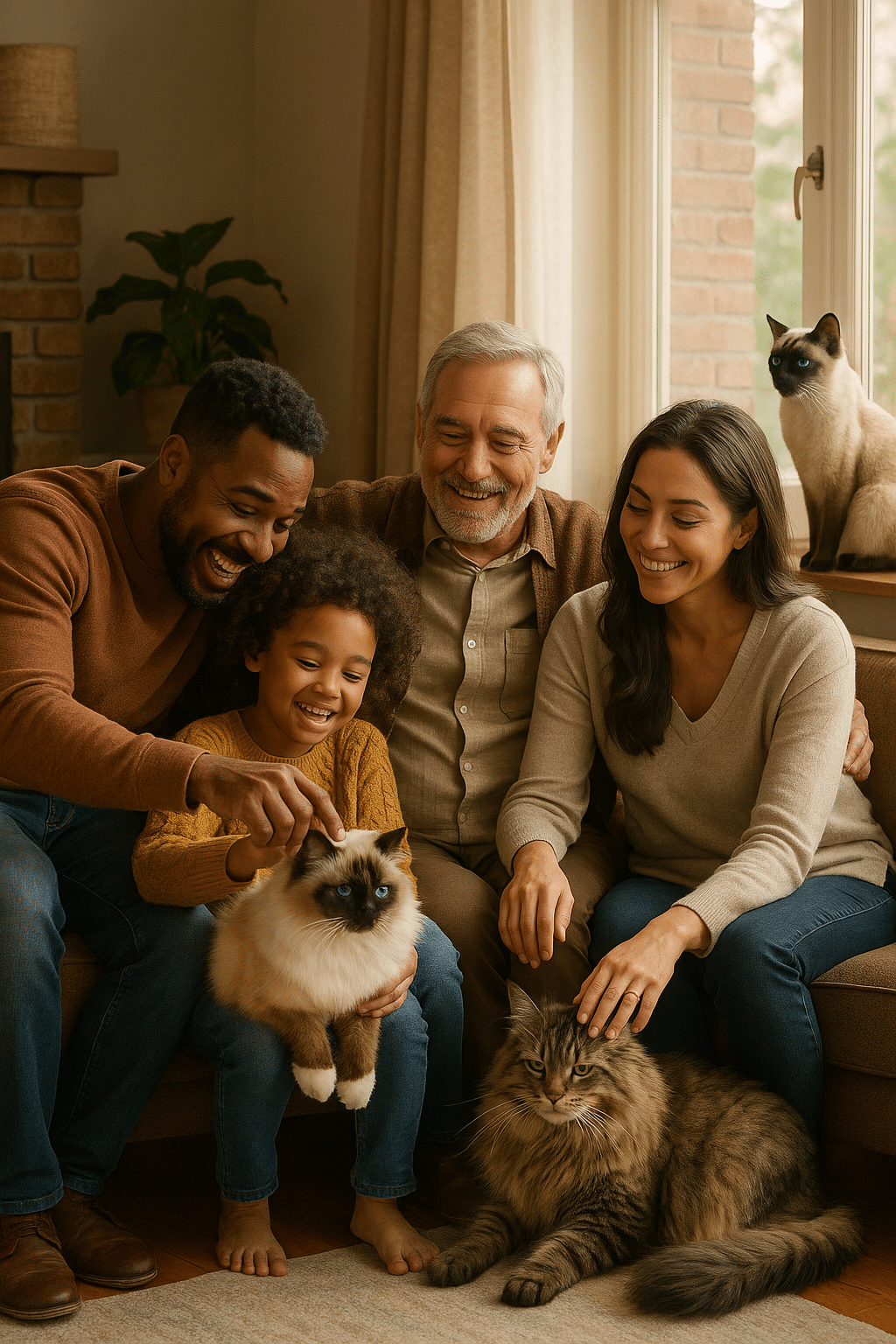
Now, let me introduce you to the five affectionate cat breeds that I often recommend to families and pet owners seeking loving, cuddly companions.
Ragdoll: The Ultimate Lap Cat and Gentle Companion
Ragdolls are celebrated as the quintessential lap cats. Named for their tendency to go limp when held, these cats exude tranquility and trust. They thrive on human touch, often following their owners like puppies.
- Size and Appearance: Large, with striking blue eyes and semi-long plush fur, Ragdolls boast a luxurious coat that’s surprisingly low-maintenance given their size.
- Temperament: Exceptionally calm and patient, Ragdolls are gentle with children and other pets. Their laid-back personality suits busy families needing a soothing presence.
- Behavioral Traits: They enjoy cuddling for hours and have a mild vocal tone—enough to communicate without being overwhelming.
- Compatibility: Perfect for indoor living and families craving a cuddle buddy who is happy to settle quietly after playtime.
- Training Tips: Ragdolls respond well to treats and gentle commands, making litter training and simple tricks straightforward.
Maine Coon: The Friendly Giant with a Heart of Gold
The Maine Coon is a giant in the cat world but carries a heart as tender as their fluffy paws.
- Size and Appearance: Known as “gentle giants,” Maine Coons are one of the largest domestic breeds, with tufted ears, bushy tails, and a thick coat adapted to cold climates.
- Temperament: Affectionate without being clingy, they’re social butterflies who enjoy interactive play and family company.
- Behavioral Traits: Maine Coons are playful into adulthood, love puzzle toys, and often develop strong bonds with children.
- Compatibility: Their easygoing nature makes them ideal for families with multi-pet households, and they adapt well to apartment or house living.
- Special Note: Regular grooming keeps their thick fur tangle-free, so be prepared to spend a few minutes several times a week.
Siamese: Vocal, Social, and Devoted to Their Humans
If you want a talkative, deeply connected companion, Siamese cats are the breed to know.
- Size and Appearance: Sleek and muscular with short coats and striking blue almond-shaped eyes, Siamese cats have an elegant appearance.
- Temperament: Extremely social, their vocalizations express curiosity, affection, and even sometimes displeasure.
- Behavioral Traits: Siamese cats demand attention and companionship—lonely Siamese can become bored or anxious.
- Compatibility: Great for active families who enjoy engaging their pet in tricks, games, and conversations.
- Training Tips: Using clicker training and positive reinforcement channels their intelligence and energy into constructive activities and improves behavior.
Burmese: The Sweet-Natured Shadow Cat
Burmese cats are known for their “shadow” nature—following their favorite humans everywhere.
- Size and Appearance: Medium-sized with a sleek, satin-like coat often seen in rich sable hues.
- Temperament: Affectionate, playful, and gentle; they love interactive play but also enjoy quiet companionship.
- Behavioral Traits: Burmese cats often greet family members at the door and thrive when included in household routines.
- Compatibility: Ideal for families with children due to their tolerant disposition; they’re also well-suited for first-time cat owners.
- Care Notes: Their short coats are easy to maintain and keep shiny with minimal grooming.
Sphynx: Affectionate and Energetic Hypoallergenic Choice
The Sphynx is an eye-catcher, not only for its unique hairless look but also for its energetic and affectionate demeanor.
- Size and Appearance: Medium-sized, muscular, with no fur but a warm, suede-like skin that often feels like if you’re holding a warm peach.
- Temperament: Extremely people-oriented, Sphynx cats enjoy being the center of attention and crave physical affection.
- Behavioral Traits: They’re playful, curious, and tend to bond closely with all family members, often sleeping under blankets or on laps.
- Compatibility: Great for allergy sufferers due to their lack of fur, but note they need special skin care like regular bathing and protection from extreme temperatures.
- Personality: Expect an affectionate, almost dog-like companion who follows you around and welcomes active play.
Selecting the Right Affectionate Cat Breed for Your Family
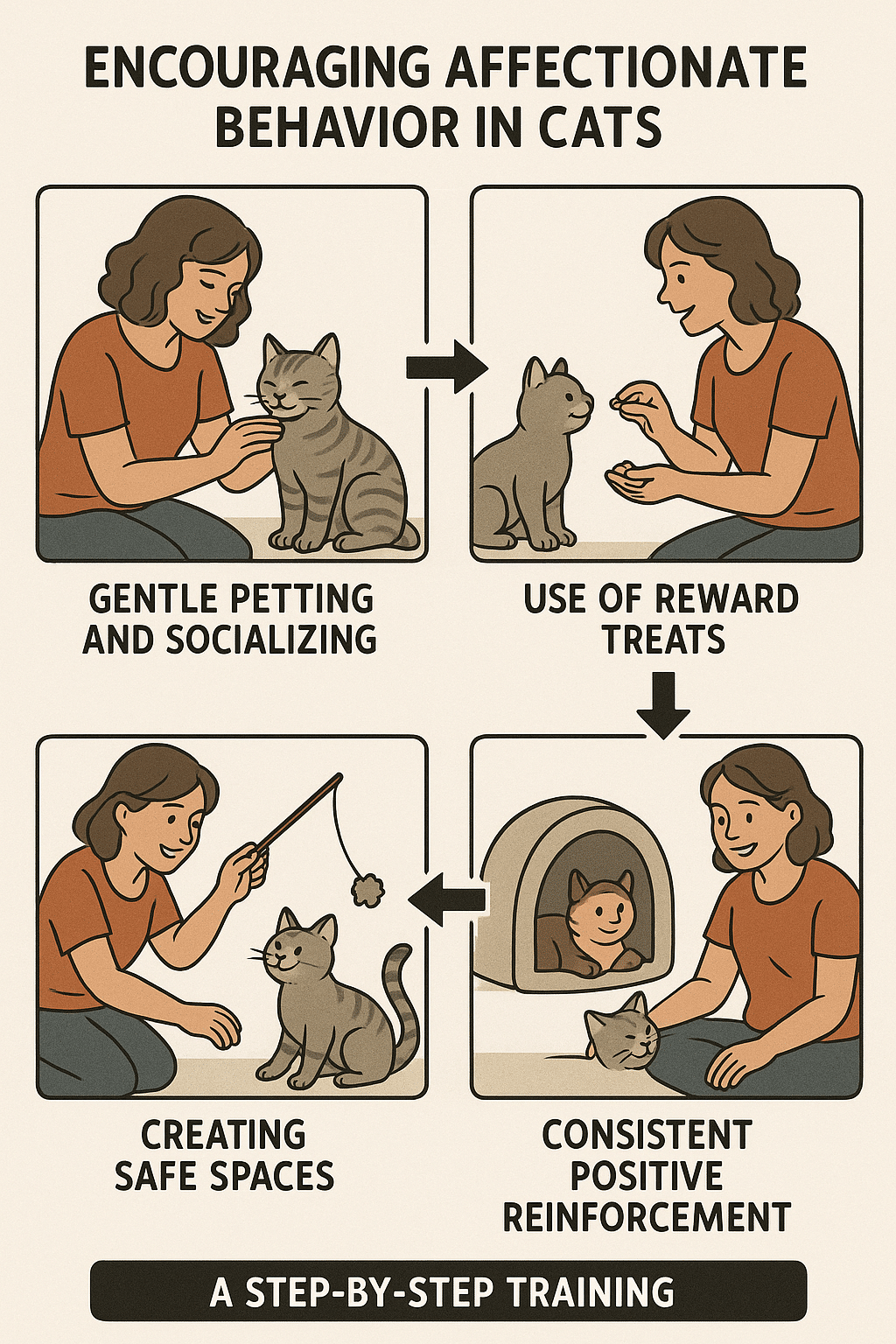
With such a rich palette of affectionate breeds, how do you choose the one best suited for your household?
Assessing Family Dynamics and Lifestyle Compatibility
Firstly, evaluate your family’s daily rhythms and environment:
- Children: Some cats like Maine Coons and Burmese handle energetic kids with patience and enthusiasm.
- Busy Households: Ragdolls and Burmese adjust well to family commotion without stress.
- First-Time Owners: Burmese and Ragdolls provide loving, forgiving temperaments.
- Activity Levels: If your family is active, Siamese and Sphynx thrive on engagement, while Maine Coons balance playful bursts with calm moments.
Understanding your lifestyle helps ensure your affectionate cat receives the attention and stimulation they need without stress.
Considering Allergies: Hypoallergenic Affectionate Cat Breeds
For families with allergy concerns, Sphynx cats offer a hypoallergenic option without sacrificing affection. Their minimal dander production reduces allergenic risks, but do note their skin requires dedicated care, including regular baths and moisturizing.
Additionally, some individuals react less to Burmese and Ragdolls, but hypoallergenic claims are individual-dependent, so always spend time with the breed before adoption.
Apartment Living and Sociable Cat Breeds
Apartment living often means limited space and noise considerations. Ragdolls and Burmese cats are excellent apartment companions thanks to their docile yet social nature. Maine Coons adapt well with enough interactive play, while Siamese cats may require more attention to prevent loneliness.
Choosing sociable breeds that enjoy human closeness helps prevent destructive boredom behaviors in confined spaces.
Training and Socializing Affectionate Cat Breeds for Optimal Bonding
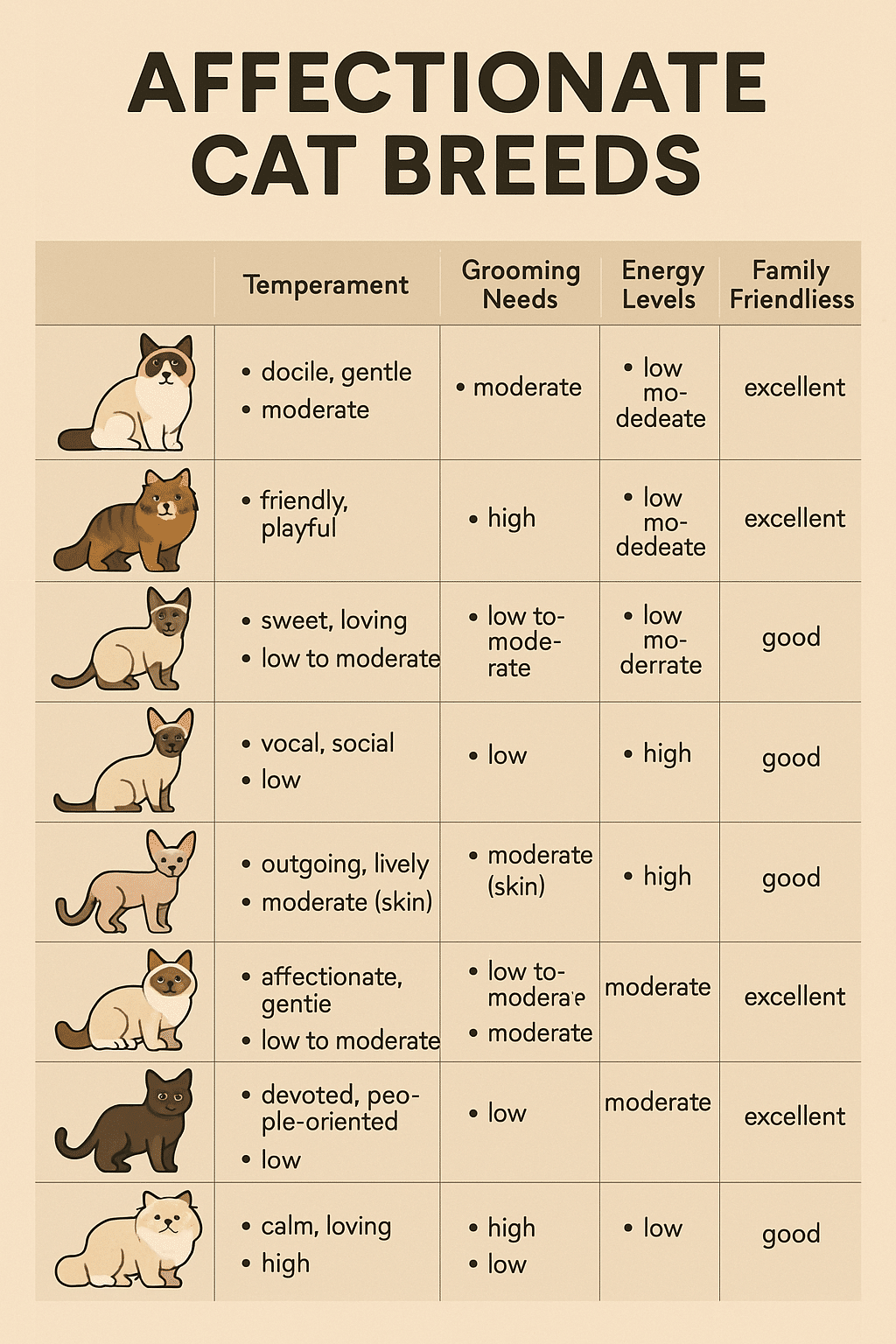
The best affectionate cat breeds still need proper training and socialization to foster trust and harmonious living.
Basic Cat Training Techniques for Affectionate Breeds
Training affectionate cats involves patience and positive reinforcement. Key methods include:
- Clicker Training: Uses a sound marker to reward desired behaviors.
- Positive Reinforcement: Rewards like treats and play encourage repetition.
- Litter Box Consistency: Maintaining routine prevents indoor accidents.
- Basic Commands: Teaching “come,” “sit,” and “stay” strengthens communication.
These techniques also stimulate their intelligence and deepen your bond.
Encouraging Positive Socialization and Reducing Anxiety
Early socialization experiences make affectionate cats more adaptable and confident. Introduce them slowly to new people, pets, and environments. Use calming pheromone diffusers, gentle touch, and reassuring tones to mitigate anxiety, particularly in breeds prone to vocal or sensitive behaviors like Siamese.
Managing Vocal and Attention-Seeking Behavior Effectively
Some affectionate breeds, especially Siamese, are famously vocal and craved attention. Channel this by:
- Scheduling playtimes.
- Offering interactive toys.
- Providing designated “quiet” areas.
- Training boundaries gently using distractions or commands.
By acknowledging their needs proactively, you prevent frustration on both ends.
Enhancing the Bond: How to Foster Affectionate Relationships with Your Cat
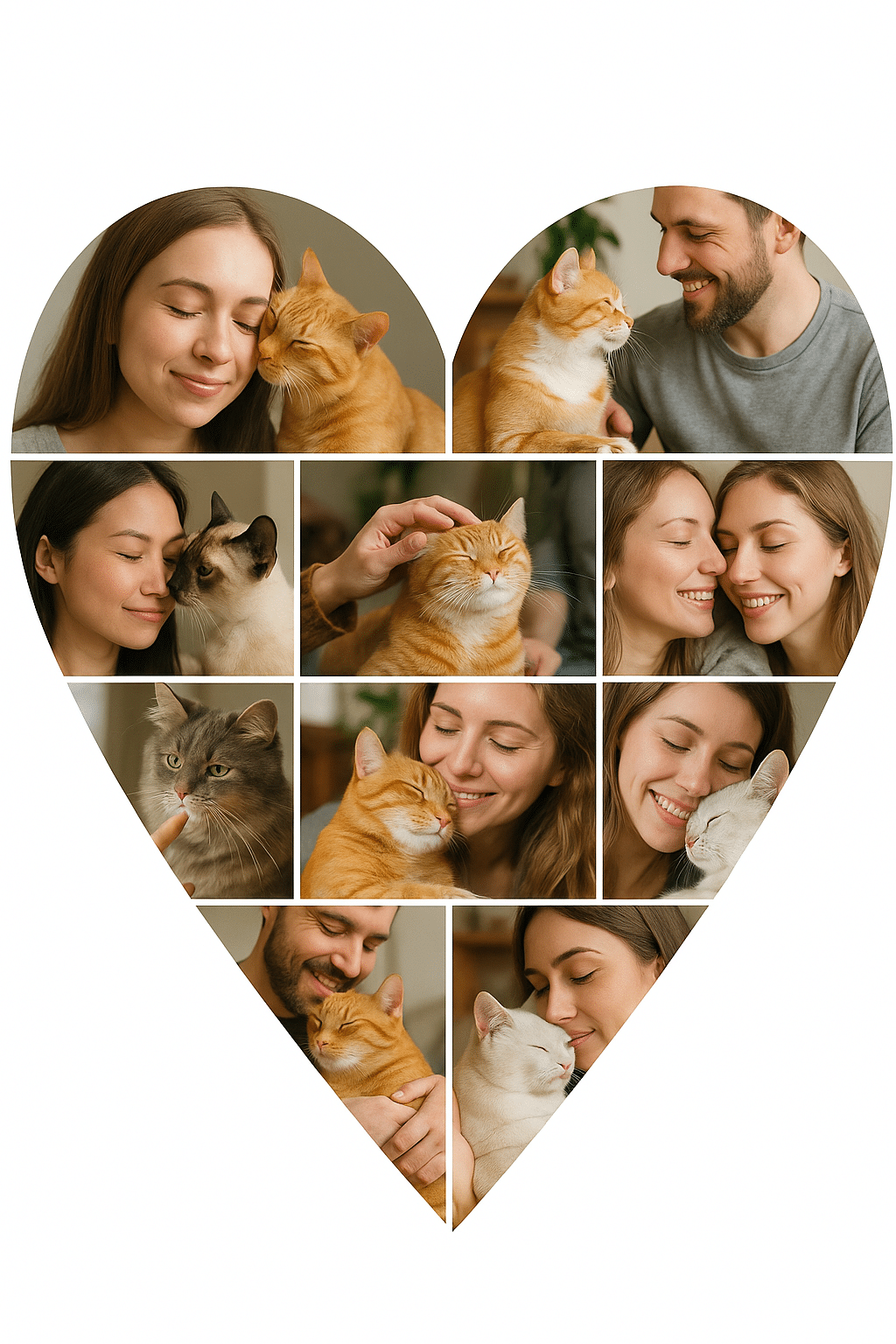
Bonding with your affectionate cat goes beyond basic care. Recognizing their communication and emotional needs lays the foundation for lifelong companionship.
Understanding and Responding to Cat Communication Signals
Interpreting slow blinks, body language, and subtle vocalizations helps you respond with empathy:
- Mirror slow blinks to convey trust.
- Respect tail and ear signals indicating overstimulation.
- Use calm voices to soothe or invite interaction.
This mindful approach opens the door to mutual understanding.
The Importance of Play and Interactive Activities for Bonding
Interactive play builds trust and provides critical mental and physical stimulation:
- Use wand toys to mimic hunting.
- Introduce puzzle feeders.
- Rotate toys to keep novelty.
Playtime is a perfect opportunity to deepen affection while promoting a healthy lifestyle.
Grooming and Physical Touch as Affection Enhancement
Especially in breeds like Maine Coon and Ragdoll, regular grooming sessions are bonding rituals:
- Brushing reduces shedding and strengthens trust.
- Gentle massages calm and foster closeness.
- Touch aids emotional well-being, particularly for shy cats.
These moments create a loving routine appreciated by cats and owners alike.
Challenges and Considerations in Owning Affectionate Cats
Owning an affectionate cat comes with unique responsibilities and potential challenges.
Balancing Attention Needs with Family Schedules
Some affectionate breeds require significant attention to stay emotionally satisfied. Busy families must plan consistently or consider multiple pets to ensure social needs are met, avoiding loneliness-induced misbehavior.
Health and Wellness for Affectionate Cat Breeds
Affectionate cats sometimes develop separation anxiety or obesity if inactive. Regular vet checkups, a balanced diet, and mental enrichment are essential. Some breeds may have breed-specific health concerns (e.g., hypertrophic cardiomyopathy in Ragdolls and Maine Coons), so informed veterinary care is crucial.
Recognizing Emotional Support Potential in Affectionate Cats
Due to their close bonds and empathetic nature, many affectionate cats serve as emotional support animals. Families with mental health needs can benefit greatly, but it requires training, understanding, and sometimes official certification.
Conclusion: Making an Informed Decision for a Loving Family Pet
Choosing from the best affectionate cat breeds for families is a rewarding journey that involves understanding your lifestyle, family dynamics, and the unique needs of each breed. Ragdolls, Maine Coons, Siamese, Burmese, and Sphynx cats all offer distinctive affectionate traits, ensuring there’s a loving companion for every household.
Remember, a cat’s affection is nurtured through patience, respect, and care. Invest time in training, play, grooming, and truly listening to your feline friend’s communication cues, and you’ll forge a relationship that brings warmth and joy for years to come.
If your family is ready to welcome one of these affectionate cat breeds, I urge you to research reputable breeders or consider adoption through breed-specific rescues. The lifelong love and companionship you gain are worth every moment of effort.
Happy cat parenting!
FAQs
1. What are the best affectionate cat breeds for families with young children?
Breeds like Maine Coon, Ragdoll, and Burmese are excellent choices due to their gentle and sociable temperaments. They tolerate handling well and enjoy interactive play, making them great companions for kids.
2. Are there low-maintenance affectionate cat breeds?
Yes, Burmese and Siamese cats are relatively low-maintenance regarding grooming. Ragdolls require a bit more care but reward with quiet companionship. Sphynx cats need regular skin care despite their hypoallergenic nature.
3. How can I train affectionate cat breeds for better behavior?
Use positive reinforcement and clicker training to encourage desired actions. Consistent routines, litter box training, and scheduled play help manage energy and avoid unwanted behaviors, especially in vocal breeds like Siamese.
4. Which affectionate cat breeds are suitable for apartment living?
Ragdolls, Burmese, and Maine Coons adapt well to apartment life due to their calm yet social natures. Siamese cats need extra stimulation, so ensure you have time for interaction and play.
5. Are there affectionate hypoallergenic cat breeds for allergy sufferers?
The Sphynx is a top affectionate and hypoallergenic breed option. Their lack of fur reduces allergens, but their skin needs special care. Spend time with the breed to confirm your allergy compatibility.
Quick Takeaways
- Affection in cats is shown through physical closeness, vocalizations, and trust-signaling behaviors.
- Ragdoll, Maine Coon, Siamese, Burmese, and Sphynx top the affectionate cat breeds list for families.
- Breed temperament and characteristics greatly influence suitability for different family types and lifestyles.
- Training and socialization are essential to nurture affectionate behaviors and reduce anxiety or vocal demands.
- Active play, grooming, and attentive communication deepen bonds with affectionate cats.
- Consider allergies, grooming needs, and family schedules when selecting an affectionate breed.
- Affectionate cats can serve emotional support roles and enhance family well-being.
For more insights on affectionate cat breeds and training techniques, consider exploring reputable organizations such as The International Cat Association (TICA) and Cat Fanciers’ Association (CFA). These sources offer breed standards and care guidance to help you choose wisely.
Happy bonding with your future feline family member!

